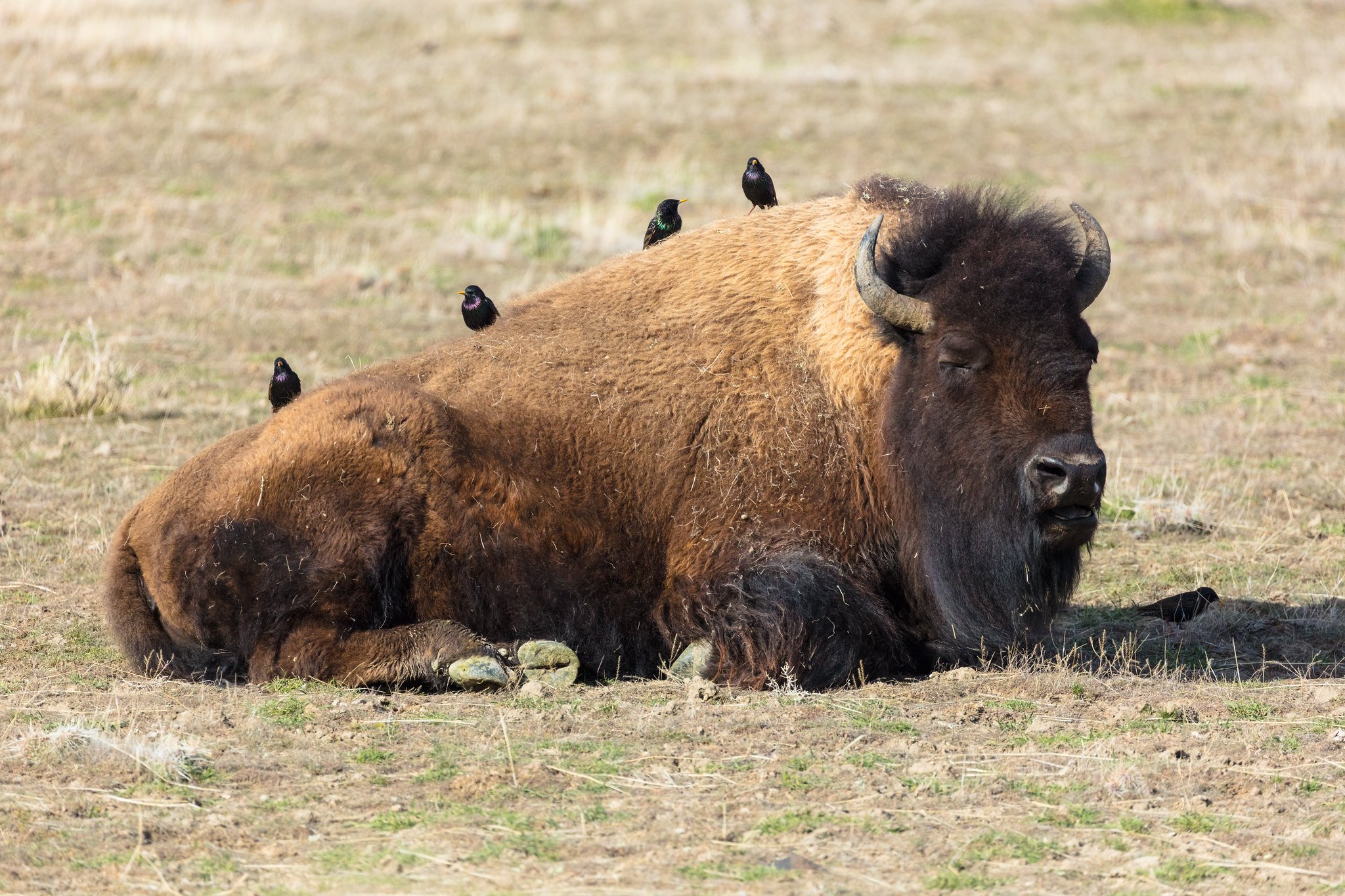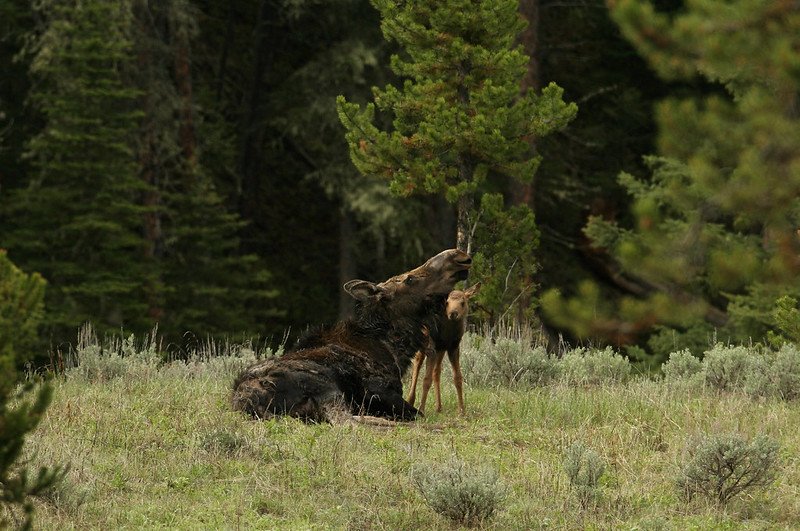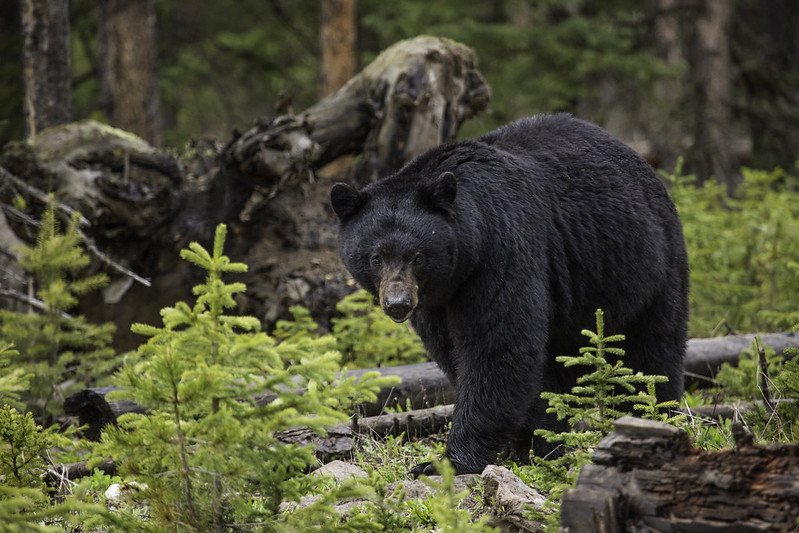Yellowstone’s Wildlife
By: Sarah Reish
Yellowstone National Park (YNP) has one of the most iconic landscapes, but it is also home to an abundance of wildlife. Unlike anywhere else on earth, Yellowstone’s wildlife is diverse ranging from small creatures like the marmot to the great North American Bison. From herbivore to the predator that is the grizzly bear you are sure to see some amazing animals during your trip into the park. The National Park Service and Game and Fish track and manage the free roaming wildlife that resides inside YNP allowing visitors to watch and learn about the wonder of North American species. For optimal animal sightings either early morning or evening is best, as this is when the wildlife come out to feed.
With over 403 species of wildlife, this article could end up being a book. So, in an effort to keep this more concise I thought I would share some of YNP’s tips by highlighting the most popular hot spots and the animals that call these locations home. Choose a location based on the wildlife you most want to see!
Photo By: Live WYld
Fishing Bridge
This is one of the first populated stopping points you reach when entering from the East Gate. Fishing bridge offers a visitor center and museum (built in 1931), souvenirs and gift store, and of course fishing! But this is also a location known for its grizzly bear sightings. Stay bear aware and follow the guidelines, they are in place for your safety. As of 2016 there were 690 grizzly bear in the park.
Did you know? It is against the law to feed any wildlife in the park, including the grizzly bear. Which would be highly unsafe.
Photo Provided By: Yellowstone National Park
Photo Provided By: Yellowstone National Park
Hayden Valley
This grassland and marshland make up an incredible ecosystem which is home to some equally incredible wildlife. We have had some of our best wildlife sightings in this area. It is home to the North American Yellowstone bison, both black bear and grizzly bear, and wolves. Because of the geothermal features the grasslands are rich in nutrients making it ideal for the herbivores and by default also the carnivores.
Did you know? Yellowstone Bison have called Yellowstone home longer than any other location. It is also home to the largest herd of bison in the country and it’s on public land!
Lamar Valley
Known as the Northern Range this grassland is home to more of the Yellowstone bison herd. It is also home to both black and grizzly bear, bighorn sheep, elk, mule deer, pronghorn and wolves. Similar in a way to Haden Valley; however this ecosystem lacks the marshland making it preferable to wildlife during the winter. Don’t worry it is still a favorite for wildlife during the summer season.
Did you know? The pronghorn are in the same family as the giraffe! They are more closely related to giraffe than they are to deer.
Photo Provided By: Yellowstone National Park
Photo Provided By: Yellowstone National Park
Mammoth Hot Springs/North Gate
Coming to mind first might be the terrace like hot springs, but with rich vegetation this northern part of the park is home to some amazing wildlife. As you enter the North Gate you are likely to encounter bison that are part of the Yellowstone herd, black bears, bighorn sheep, elk, and mule deer. The thick grass is rich in nutrients as it is much more protected and differs from the grasses found in the prairie lands of the valleys.
Did you know? Adult male bighorn sheep can have horns that weigh up to 40 lbs!
Madison
Madison is home to some iconic sightseeing and it is easy to get distracted. During rut the elk frequent the area and bison enjoy the meadows during fall and winter. This is also a location where you can spot bald eagles, trumpeter swans, mallard ducks and more! The water fowl in this location are outstanding.
Did you know? The trumpeter swan is the heaviest flying bird in North America! It is also the largest native water fowl.
Photo Provided By: Yellowstone National Park
Photo Provided By: Yellowstone National Park
Northeast Entrance
We love taking the Cody loop and entering through this entrance, while it is a longer drive it is a chance to sight more wildlife. The Northeast entrance is iconic and built in 1935 and is also a ranger residence and a National Historic Landmark. Moose are known to be seen around this entrance gate and enjoy the habitat that can be found here.
Did you know? The adult male moose can weigh up to 1,000 lbs and when born a moose can weigh close to 35 lbs.
Old Faithful
It isn’t uncommon to see both bison and elk in the habitats surrounding Old Faithful. Remember geothermal features create nutrient rich grasses for the herbivores to enjoy. While you may not spot them on the boardwalks while you are waiting for the next eruption from Old Faithful, keep an eye out on your hikes and drives into and out of this area.
Did you know? There are six or seven herds of elk that call Yellowstone home. This adds up to somewhere between 10,000-20,000 elk. It is the largest mammal population in Yellowstone.
Photo Provided By: Yellowstone National Park
Photo Provided By: Yellowstone National Park
South Gate
Moose really enjoy the gates into the park because this is another location where you can spot moose. The south entrance is in a beautiful wooded area with waterways, making it ideal for a moose habitat.
Did you know? Moose prefer aquatic plants during the summer like water lilies, duckweed, and burweed and can eat as much as 50 lbs a day.
West Thumb
One of my favorite location, West Thumb is where you could encounter elk, bear, and moose - along with bird sightings. We have captured one of my favorite elk photos in this area. It is also a location where, in the spring, you can spot elk and their calves.
Did you know? It is the Elk’s large antlers that make it one of the most photographed animals in Yellowstone.
Photo Provided By: Yellowstone National Park











